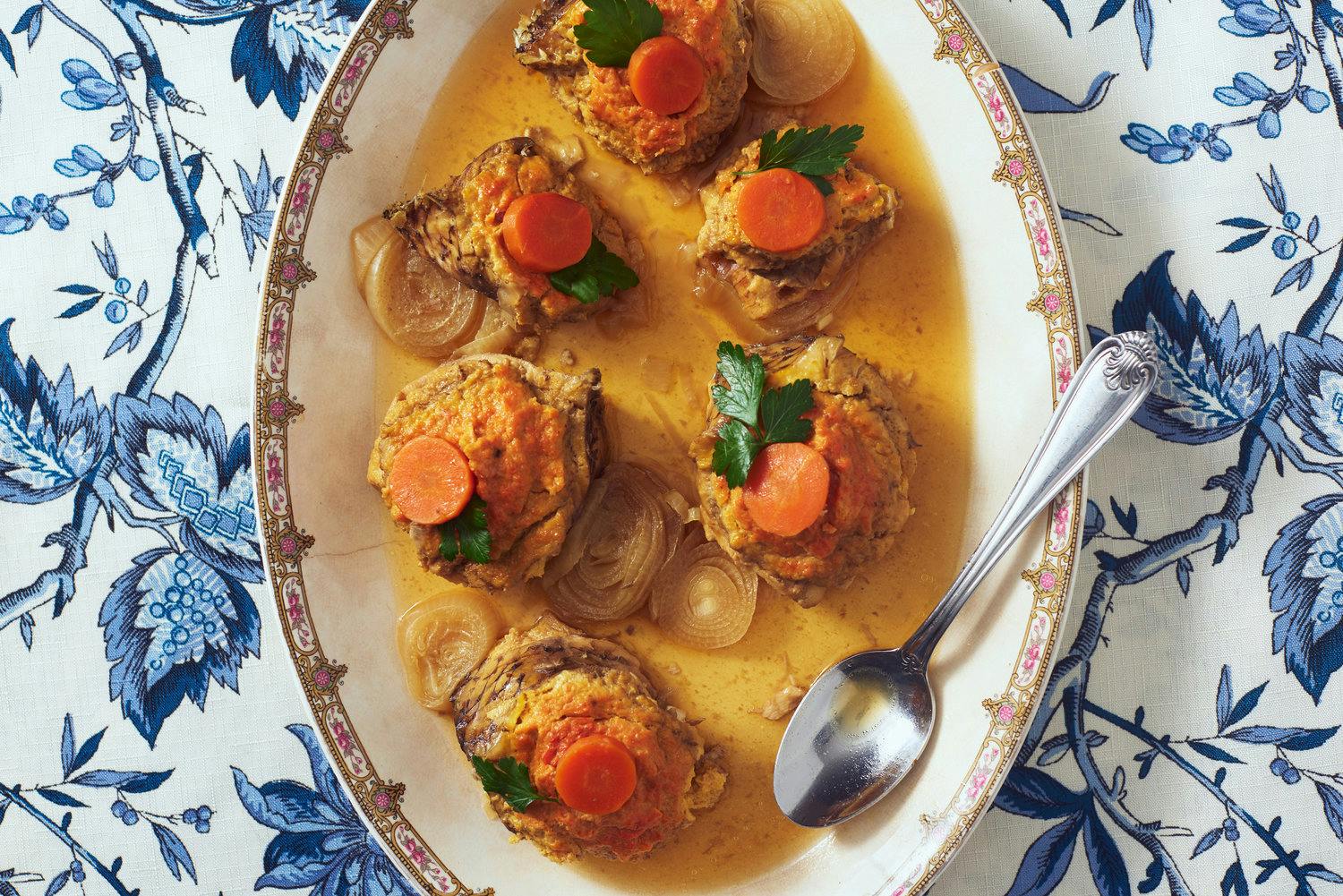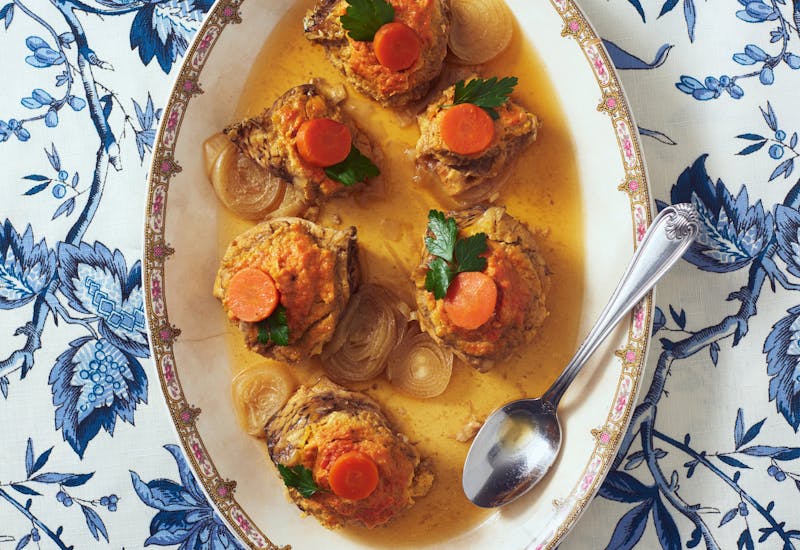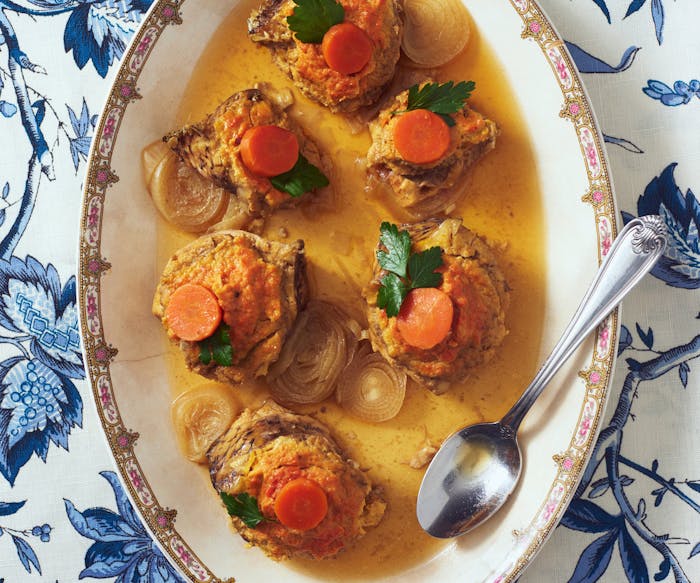Dorit Golender never met her grandmother Shula, but it’s her gefilte fish recipe, made with carp, shredded beet, and just the smallest pinch of sugar that graces her table in Israel for holidays and when special guests join for dinner.
“My Grandmother Shula had a restaurant in a petrol station in Lithuania,” she tells us. “Everyone knew the restaurant and people would come...to taste the gefilte fish, kugel, and kishke.” Her grandmother was killed at the start of the war, and Dorit’s mother Lea lost her brother and her first husband to the Holocaust.
When Lea returned to Lithuania to find any family that remained, there was no one left. She wasn’t alone, though. Nearly every household around them had lost someone and the Jewish community in Vilnius gathered together to fill the holes left in each other’s families.
Dorit grew up in this community, surrounded by stories of her grandmother’s cooking. And even behind the Iron Curtain, she says, Lithuania was a special place for Jewish life, where you could feel Jewish, but you still “needed to be very careful.”
Her parents were ardent zionists, but no one was allowed to leave the Soviet Union. That changed in 1967 when her mother, a well-known seamstress in Vilnius, asked a client who was the wife of a government official to help her leave for Israel. The woman responded: “If you get the papers, I will try to help you.”
At 18, when Dorit arrived in Israel, it felt like a dream, she says, but that dream shattered quickly. She moved to a kibbutz to study Hebrew and the Six Day War broke out. She picked oranges for six hours a day, pitching in to help the community come through the war and a recession. But, the hardest moments were in the communal dining hall of the kibbutz. She missed the food of the grandmother she never knew; for her, it was home.
When she enrolled in university in Jerusalem, she started to cook again, often with friends. The gefilte fish, however, didn’t return until later, when she had a home of her own as she became an acclaimed journalist and the Israeli ambassador to the Russian Federation. Today, it is a signature dish of hers, which she will include in an upcoming cookbook she is publishing.
She still makes it as her grandmother and mother did. “There’s one secret that my mother [taught] me,” she says. In every dish you must have “a little bit of sugar. It’s not for sweetness…[it] gives the dishes a special taste.” Gefilte fish included.


